RESEARCH ARTICLES
Click on images to be redirected to sources.
.jpg) The Interplay Between Skills-Based Labor Mobility & Climate Change in the MENA Region
The Interplay Between Skills-Based Labor Mobility & Climate Change in the MENA Region
The objective of this review was three-fold: (1) To define climate change in the MENA region and skill labor mobility partnership (SMPs), (2) to identify climate change initiatives that indicate future labor needs in the MENA region, and (3) to review case studies and successful SMPs either in the MENA region or outside. The ultimate purpose, therefore, is to identify sectors, skills, and infrastructure for mutually beneficial SMPs to help bolster the MENA region’s resilience in the face of climate change.
 Farm Size Affects Use Of Agro-Ecological Practices On Organic Farms
Farm Size Affects Use Of Agro-Ecological Practices On Organic Farms
Organic agriculture outperforms conventional agriculture across several sustainability metrics due, in part, to more widespread use of agroecological practices. However, increased entry of large-scale farms into the organic sector has prompted concerns about ‘conventionalization’ through input substitution, agroecosystem simplification and other changes.
.jpg) Compatibility Of Circularity & National Dietary Recommendations For Animal Products
Compatibility Of Circularity & National Dietary Recommendations For Animal Products
National food-based dietary guidelines (FBDGs) are generally designed from a human health perspective and often disregard sustainability aspects. Circular food production systems are a promising solution to achieve sustainable healthy diets. In such systems, closing nutrient cycles where possible and minimising external inputs contribute to reducing environmental impacts.
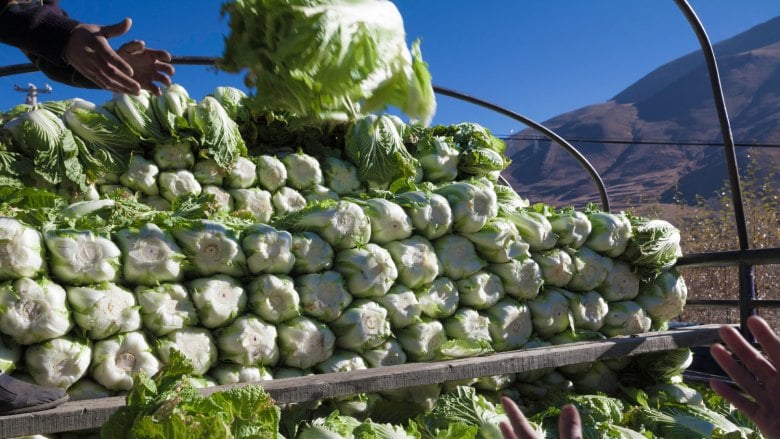 Global Food-Miles Account For ~20% Of Total Food-Systems Emissions
Global Food-Miles Account For ~20% Of Total Food-Systems Emissions
Global freight transport associated with vegetable and fruit consumption contributes 36% of food-miles emissions—almost twice the amount of greenhouse gases released during their production.
.jpg) Evaluating Tomato Production In Open-Field & High-Tech Greenhouse Systems
Evaluating Tomato Production In Open-Field & High-Tech Greenhouse Systems
High-tech greenhouse production of vegetables has been proposed as a path to sustainable intensification of food production. While these systems have clear productivity advantages, there are outstanding questions around their overall sustainability that merit evaluation.
.jpg) Equitable Food-Oriented Development
Equitable Food-Oriented Development
EFOD is a development strategy that uses food and agriculture to create economic opportunities, healthy neighborhoods, and explicitly seeks to build community assets, pride, and power by and with historically marginalized communities.
.jpg) Current Status And Future Challenges In Implementing And Upscaling Vertical Farming Systems
Current Status And Future Challenges In Implementing And Upscaling Vertical Farming Systems
Vertical Farming systems currently produce a limited range of crops including fruits, vegetables and herbs, but successful implementation of vertical farming as part of mainstream agriculture will require improvements in profitability, energy efficiency, public policy and consumer acceptance.
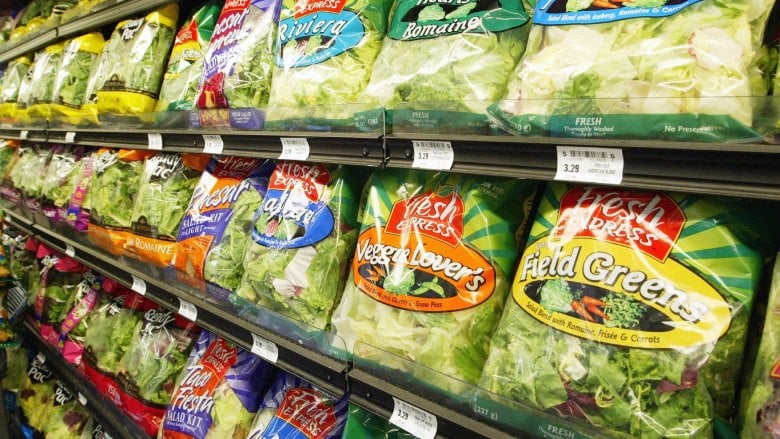 Do Prepackaged Salad Greens Lose Their Nutrients?
Do Prepackaged Salad Greens Lose Their Nutrients?
“It's a rich source of vitamin A and fiber and a little bit of iron. It's the total package that's important.” If you're concerned about the nutrients in your salad greens, keep them refrigerated and eat them while they're still fresh and the leaves have not wilted, Dr. Lila says.
.jpg) An Economic and Environmental Comparison of Conventional and Controlled Environment Agriculture (CEA) Supply Chains for Leaf Lettuce to US Cities
An Economic and Environmental Comparison of Conventional and Controlled Environment Agriculture (CEA) Supply Chains for Leaf Lettuce to US Cities
We assess the landed costs and selected environmental outcomes of conventional field-based and representative CEA supply chains (greenhouses and plant factories) for leaf lettuce delivered to wholesale markets in two US cities.
.jpg) 2021 AgFunder AgriFoodTech Investment Report
2021 AgFunder AgriFoodTech Investment Report
Startups raised $26.1 billion in 2020, a 15.5% year-over-year increase, which we expect to increase to more than $30 billion as new 2020 deals come to light. This would represent 34.5% growth over 2019.
.jpg) AgFunder Agri-FoodTech Investing Report - 2019
AgFunder Agri-FoodTech Investing Report - 2019
Foodtech and agtech startups raised $19.8bn in venture funding across 1858 deals. Following on from a record-breaking 2018, that's a 4.8% decline year-over-year in dollar terms and 15% by number of deals. But there were some clear bright spots with a 1.3% increase in funding to startups operating upstream -- on the farm and in the supply chain -- as they raised $7.6bn, posting the highest levels of record during any H2 on record.
.jpg) The New Agrarian Economy Report
The New Agrarian Economy Report
Brooklyn Borough President Eric Adams joined the New York University (NYU) Stern Center for Sustainable Business and the Cornell University College of Agriculture and Life Sciences, along with leading urban agriculture advocates, to release a new report on the untapped potential of urban agriculture, titled “The New Agrarian Economy.” The report lays out concrete proposals to encourage the growth of urban agriculture in New York City.
%20(1).jpg) Growing Beyond the Hype: Controlled Environment Agriculture
Growing Beyond the Hype: Controlled Environment Agriculture
Controlled farming has the potential to offer consumers and supply chain stakeholders resilient, sustainable, local, high-quality products. Utilizing different methods and formats, indoor and greenhouse producers can alleviate systemic nutrition and food access challenges, while mitigating climate and outdoor production risk. In our latest report, we explore Controlled Environment Agriculture in the context of today’s market and perspectives on the future potential.
.jpg) 2019 Global CEA Census
2019 Global CEA Census
Agritecture and Autogrow’s annual global CEA census showcases a pulse of what is happening in the CEA industry around the world.
.jpg) Employment Opportunities for College Graduates
Employment Opportunities for College Graduates
We expect that in the United States between 2020 and 2025, employment opportunities will remain strong for new college graduates with interest and expertise in food, agriculture, renewable natural resources and the environment.
%20(1).jpg) Evaluation of Recycled Materials as Hydroponic Growing Media
Evaluation of Recycled Materials as Hydroponic Growing Media
Conventional soilless growing media, such as perlite, are mined from nonrenewable resources and can only be disposed of in landfills after limited use. There is a need to investigate novel, sustainable growing media adapted from waste or engineered to be reused over multiple cycles.
%20(1).jpg) Indoor Soilless Farming: Phase I: Examining the industry and impacts of controlled environment agriculture
Indoor Soilless Farming: Phase I: Examining the industry and impacts of controlled environment agriculture
This Innovation Analysis from The Markets Institute at WWF examines the environmental impact of various systems of indoor soilless farming. These systems include hydroponics, aquaponics, and aeroponics in greenhouse and vertical settings.
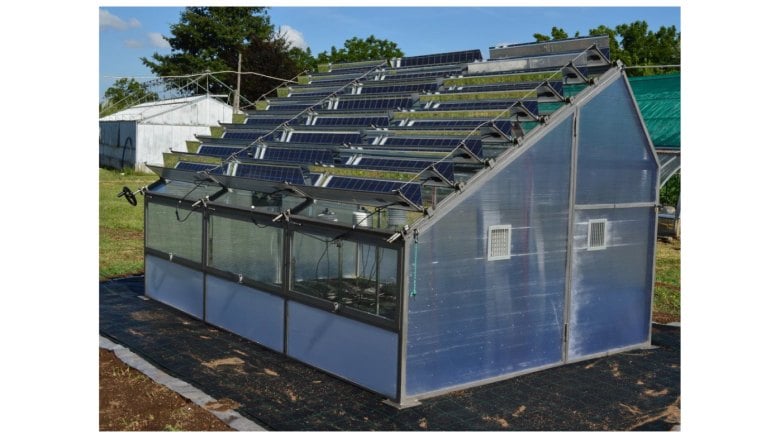 Micro Climatic Analysis of Sustainable Agricultural Greenhouse with Built-In Roof Solar Stills
Micro Climatic Analysis of Sustainable Agricultural Greenhouse with Built-In Roof Solar Stills
This study investigates the microclimatic performance of an integrated agricultural greenhouse system with built-in transparent roof solar stills. These solar stills harnesses the excess solar energy to produce irrigation water and at the same time provide partial shading to the crop region. The results show that the proposed greenhouse is sustainable and capable of producing a sufficient amount of irrigating water (6 L/m2.day) for plant needs and satisfying the required micro climatic conditions.
.jpg) Protected Cropping in Warm Climates: A Review of Humidity Control and Cooling Methods Published
Protected Cropping in Warm Climates: A Review of Humidity Control and Cooling Methods Published
This review aims to identify climate-control solutions available for CEA in regions that predominantly require cooling methods combined with humidification or dehumidification. Analyzes the benefits of controlled crop cultivation in warm regions as well as information on climate-control requirements.
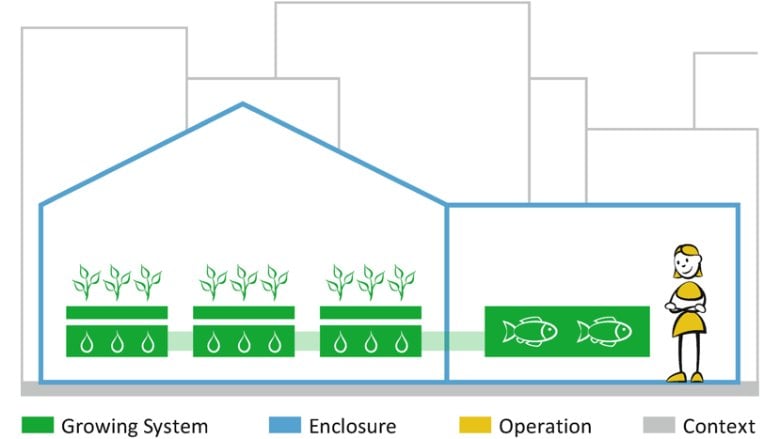 Aquaponics in the Built Environment
Aquaponics in the Built Environment
Extensively examines aquaponic commercial farm operations and their relationship to the urban environment. This work hopes to help connect aquaponics to the larger scope of urban sustainability by using a more in-depth life cycle assessment to analyze environmental impacts and resources used.
.jpg) Methodology for a Risk Assessment Decision Support System in Vertical Farming
Methodology for a Risk Assessment Decision Support System in Vertical Farming
High capital demands and a steep learning curve have caused the vertical farming industry to struggle, primarily with economic viability and proving claims of environmental sustainability. This paper gives a detailed review of relevant systems and technology as well as describes a decision support system to help small-scale vertical farms to inform investments through risk analysis.
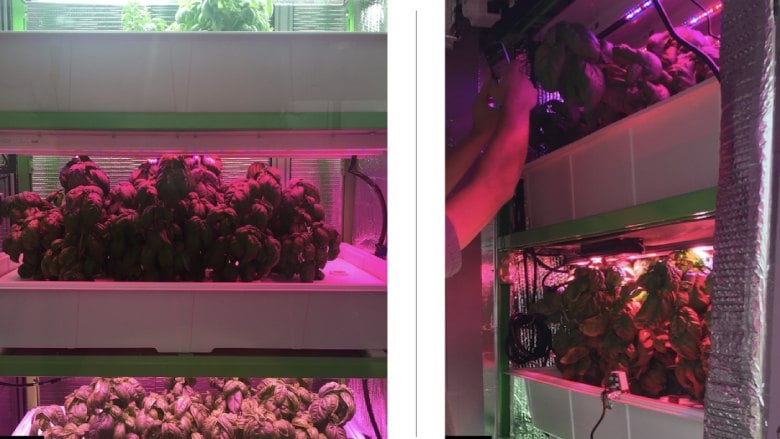 Flavor-cyber-agriculture: Optimization of plant metabolites in an open-source control environment through surrogate modeling
Flavor-cyber-agriculture: Optimization of plant metabolites in an open-source control environment through surrogate modeling
This paper discusses “climate recipe,” where light, water, nutrients, temperature, and other climate and ecological variables are optimized to achieve a desired result. These new climate recipes were implemented in a hydroponic farm, and several of them resulted in a marked increase in volatiles over control. The process also led to two important insights: it demonstrated a “dilution effect”, i.e. a negative correlation between weight and desirable chemical species, and that a 24 hour light cycle induces the most flavor molecule production in basil.
.jpg) Breeding new varieties for controlled environments
Breeding new varieties for controlled environments
Although CEA is becoming increasingly feasible with new technologies, the innovation of the plant itself has been neglected. This review considers the opportunity for breeding specifically for controlled environments, shifting the focus to a completely different set of plant traits, such as rapid growth, performance in low light environments and active manipulation of plant stature.
.jpg) Modeling Environmental Burdens of Indoor-Grown Vegetables and Herbs as Affected by Red and Blue LED Lighting
Modeling Environmental Burdens of Indoor-Grown Vegetables and Herbs as Affected by Red and Blue LED Lighting
The goal of this study is to quantify the effect of varying the red and blue LED spectral components on the eco-efficiency of indoor production of lettuce, chicory, rocket and sweet basil from a life cycle perspective. From a production perspective, indoor farming systems provide many advantages, however, a number of questions arise regarding the sustainability of indoor plant cultivation with reference to energy use, particularly regarding the energy needs associated with artificial lighting.
.jpg) Exploring the contribution of vertical farming to sustainable intensification from the point of view of the innovator and the farmer
Exploring the contribution of vertical farming to sustainable intensification from the point of view of the innovator and the farmer
This paper looks to help vertical farmers understand their potential to contribute to sustainable intensification, a process or system where agricultural yields are increased with neither adverse environmental impact, nor the conversion of additional non-agricultural land.
.jpg) SIRONA: Sustainable Integration of Regenerative Outer-space Nature and Agriculture. Part 1 -- Architecture and Technology
SIRONA: Sustainable Integration of Regenerative Outer-space Nature and Agriculture. Part 1 -- Architecture and Technology
SIRONA, Sustainable Integration of Regenerative Outer-space Nature and Agriculture, is a multi-functional design that enhances physiological and psychological well-being of the crew while minimizing subsystem mass and power. It draws upon principles of bioregenerative ecosystem design to naturally recycle inputs and outputs between the integrated living systems.
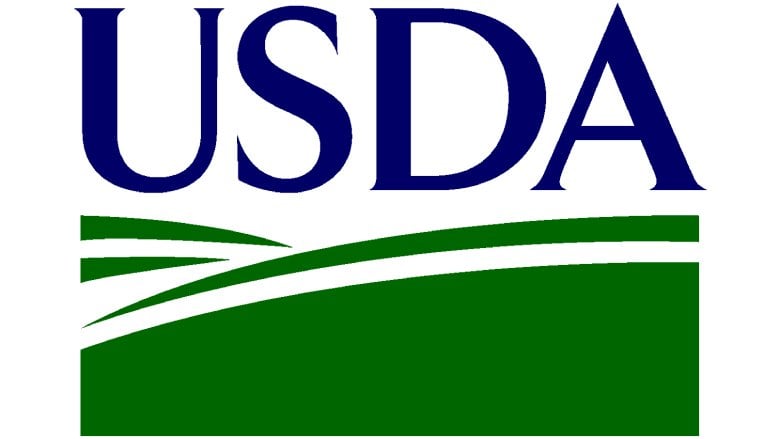 Workshop Report: Research and Development Potentials in Indoor Agriculture and Sustainable Urban Ecosystems
Workshop Report: Research and Development Potentials in Indoor Agriculture and Sustainable Urban Ecosystems
United States Department of Agriculture (2019) - Takeaways from a 2-day workshop on CEA and Indoor Agriculture that presents the challenges, needs, and opportunities around six major themes: community services, economics, ecosystem services, plant breeding, pest management, and systems engineering.
.jpg) Cities and the Circular Economy for Food
Cities and the Circular Economy for Food
Ellen MacArthur Foundation (2019) - A study that describes the benefits and vision of the circular economy for food.
.jpg) Reflections on Supporting Controlled Environment Agriculture in NYC
Reflections on Supporting Controlled Environment Agriculture in NYC
Cornell University Student Interns (2018) - The results of a study on Controlled Environment Agriculture in NYC, focussed on identifying the ecosystem of producers and shedding light on their current needs.
.jpg) Comparing the Profitability of a Greenhouse to a Vertical Farm in Quebec
Comparing the Profitability of a Greenhouse to a Vertical Farm in Quebec
Canadian Agricultural Economics Society (2017) - An academic report on the results of a detailed simulation of the profitability of growing lettuce in a VF and in a GH located near Quebec City. Assesses the costs and profitability of each operation type.
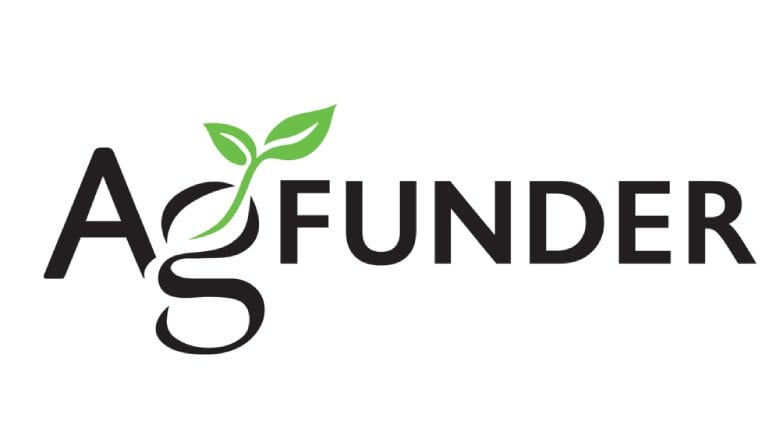 AgriTech Investing Report
AgriTech Investing Report
AgFunder (2017) - This report catalogs the increasing VC investment in FoodTech and AgTech startups. Start ups are capturing the majority of media attention in the industry and this report seeks to quantify these growing investments.

.jpg?width=780&height=439&name=Untitled%20design%20(3).jpg)